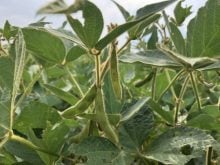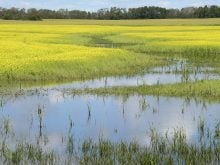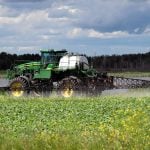A story on page 30 of this issue talks about an initiative to put a value on nature and its services. By doing so, the hope is that nature will not be taken for granted.
Decision makers will be forced to take its importance to the economy and livelihoods into account, and destruction of forests, rivers and oceans will be less likely to occur.
Such is the theory put forth by The Economics of Ecosystems and Biodiversity (TEEB.)
If we have to put a price on the priceless in order to preserve it, surely a crucial thread in the fabric of humanity has frayed. The need to affix price tags is a sad commentary on man’s ability to appreciate and protect the earth he inhabits. Yet it may be necessary.
Read Also

Fall rye hits record high in Manitoba
Winter cereals 2025: More Manitoba fields grew fall rye in 2025 than ever before, but winter wheat slipped and, while spring stand survival was good, drought took its toll
As you’ll read inside, the benefits of nature are estimated to be in the multi-trillions of dollars. Fittingly, it’s an incomprehensible amount. What is a trillion, anyway? Does anyone know except Barack Obama and Benjamin Bernanke?
But TEEB hopes nature will be made more visible through its efforts, so visible that decision makers cannot ignore its value. That seems a wise assumption, if somewhat sad.
For those who make their living from the land, nature is always visible and interwoven with daily living.
What value would we put on the sight of a hawk soaring in lazy circles on summer thermals, the edges of its feathers backlit by the sun?
What value would we put on the intricate tendrils and patterns of green, orange, yellow and brown lichen on a prairie rock exposed to centuries of weather?
And if we turn over that rock, what value would we put on the richness of the cool, rich soil, the industry of the ants that ply the dark warrens of earth’s skin, or the disappearing pink tail of an earthworm escaping the sunlight?
What value do we put on delicate yet gracefully athletic deer that twitch their ears, flap their tails and leap man-made fences with ease? What of the flash of a trout in the sun, as it leaps exultant from the river to snap at a mayfly? Or the stealth of a coyote, its clever camouflage allowing it to blend into invisibility?
What price do we put on the scent of prairie sage carried on the wind? The call of a meadowlark? The multicoloured array of prairie grasses that each feed different species?
Multi-trillions indeed.















